‘How some Turks would rather that Johnnies and Mehmets were not equal: research report’, Honest History, 19 July 2016 updated
The equality of death
‘There is no difference’, we are told every Anzac Day, ‘between the Johnnies and the Mehmets to us where they lie side by side here in this country of ours’. We are told also that these are the words of Mustafa Kemal Atatürk, an Ottoman officer at Gallipoli and later the revered founder of modern Turkey. This sentence is part of a longer set of words (commencing in English translation with ‘Those heroes that shed their blood …’) claimed to have been said or written by Atatürk. There is also another English version of the words which does not include the Johnnies and Mehmets sentence.
The provenance of the complete ‘Those heroes …’ package is dubious and Honest History and its associates have explored this issue in detail; there is more to come. The most likely scenario is that most of what we think of today as ‘the Atatürk words’ were made up by his former minister and close associate, Şükrü Kaya, in 1953, 15 years after Atatürk died. Kaya may have recalled remarks that Atatürk made to him but we have found no other evidence of such remarks, either spoken or written. Many fanciful suggestions have been made as to when the words might have been said or written, some of them claiming that Atatürk himself gave the speech.
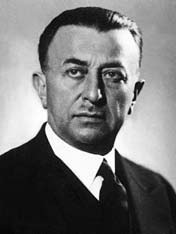 Şükrü Kaya (Wikipedia)
Şükrü Kaya (Wikipedia)
The origin of the ‘equal Johnnies and Mehmets’ sentence – the claim that there is no difference between Anzac and Empire dead and Ottoman dead – is, however, pretty much beyond doubt: an elderly Australian returned soldier concocted these words in 1978 and the semi-official Turkish Historical Society concurred. For more, see particularly this article by the Turkish scholar, Cengiz Özakinci (translated from the Turkish), and this one by the Australian journalist, Paul Daley.
We lack detailed evidence as to why Alan J. Campbell preferred the equal Johnnies and Mehmets gloss on the Turkish words, ‘Sizler, Mehmetçiklerle yanyana, koyun koyunasınız’ – the other common English translation renders these words as ‘You are side by side, bosom to bosom with our Mehmets’ – but we do have the story of how the change came about: it appears, in Turkish and passable English translation, in Uluğ İğdemir’s 1978 booklet, Atatürk ve Anzaklar (Atatürk and the Anzacs). (İğdemir was the head of the Historical Society.)
In summary, İğdemir retrieved Şükrü Kaya’s 1953 interview in the Dunya newspaper, including the words Kaya claimed Atatürk had given him to use in a speech. İğdemir sent an English translation of the words to Campbell but Campbell amended the translation for use on a plaque on the Gallipoli Fountains of Honour in Brisbane. (Campbell was the head of the Fountains of Honour committee.) Campbell noted that the new translation, adding the ‘equal Johnnies and Mehmets’ words, ‘varies slightly with the advices you have sent me. But the difference makes no difference in solemn meaning and inspiration. It is very beautiful indeed.’[1]
İğdemir, after seeing a photograph of the plaque and noting the Johnnies and Mehmets gloss, seems to have decided the glossed words would do: ‘The Memorial and the beautiful statement of Atatürk are very meaningful; both advise people not to nourish inimical feelings toward each other, but to love one another in the troubled world of ours. You have given great service to Humanity by what you have done.’ İğdemir said he had informed then Turkish President Fahri Korutürk, who was also Protector-President of the Turkish Historical Society.[2]
While Campbell and İğdemir did not spell it out in 1978, the sentimental and political significance of the Johnnies and Mehmets gloss has been clear in the years since. Australians and New Zealanders who do not look too closely at the history (the lack of evidence of the ‘Atatürk words’ prior to Kaya in 1953, Campbell-İğdemir in 1978) have had the comfort of believing that the great Atatürk in the 1930s felt our dead were the same as his. Campbell’s invented words added an extra layer to the final sentence of the 1953 paragraph – not only had the Johnnies ‘become our sons as well’, there was no difference between them and our Mehmets. The two clauses together also conjured up images of Turks tending Anzac graves just as they tended Ottoman ones.[3]
Finally, the words could be used to indicate Turkey’s magnanimity and its desire for amicable relations with Western countries. Özakinci has noted Turkey’s readiness to fight with the United Nations in the Korea in the early 1950s. (Turkey joined NATO in 1952.) By the early 1980s, Turkey, emerging from years of instability and a period of military rule, was again wanting to strengthen its ties with the West. (Turkey has been an associate member of the European Union and its predecessor the European Economic Community since 1963 and its application to become a full member has been active since 1987. Arguments pro and con Turkey joining the EU.) Atatürk’s alleged words could have been a useful propaganda weapon. İğdemir’s Turkish Historical Society moved from semi-government to government status in 1983 and took up the role it had been given by the Turkish Constitution of 1982 to promote Atatürk’s legacy. (The Constitution had been written during a period of military rule in Turkey and the Turkish military has for much of the last 80 years claimed to be the custodian of Kemalism, the principles of Atatürk.)[4]
On the other hand, strongly Kemalist Turks might well have resented people promoting the idea that their hero, Atatürk, had said that the patriotic Mehmets and the invading Johnnies were equal in death. That was indeed the case with Özakinci, who retrieved the 1931 speech where Atatürk’s mouthpiece, Şükrü Kaya, made clear that Atatürk certainly did not see the two sets of soldiers as equal. (Özakinci, like others who have looked, failed to find the 1934 speech in which Kaya allegedly said the opposite.) The examples described below can be seen in a similar light; they have other interesting facets, as well.
1981-85: Turkish Embassy in Canberra fends off Turkish Foreign Ministry
Bilâl N. Şimşir was the Turkish Ambassador in Canberra from 1995-98. Dr Şimşir researched in the Embassy’s archives and the Australian media to produce an account of the deal in 1984-85 by which Turkey named part of its coastline ‘Anzac Cove’ and built an Atatürk memorial there, in return for Australia renaming features in Canberra and Albany, Western Australia, and constructing the Atatürk memorial in Anzac Parade, Canberra. (See accounts of these events from the Australian and Turkish perspectives.)
Şimşir published his account in 2001 as an 18 000 word article in Turkish.[5] Honest History has a hard copy of the article – it has been unavailable online – and is translating key parts of it into English. Şimşir transcribed the Turkish words on the Anzac Parade Atatürk memorial. He then provided a note, here translated into English:
It is not hard for someone with an eye for details to notice that there are some verbal differences, even if not in essence, between the actual words by Atatürk and the English text on the memorial in Canberra. The difference originates from the book titled “Atatürk and the Anzacs” published by the Turkish Historical Society in 1978. The translation from this book was first used in 1978 on the Gallipoli Fountains of Honour in Brisbane and has become known in Australia [emphasis added].
The story up to here pretty much accords with what we know already, although ‘first used’ is rather misleading – the Johnnies and Mehmets translation was invented for the Fountains of Honour then found its way into İğdemir’s booklet. But here comes the interesting part.
Our Ministry of Foreign Affairs prepared a new literal English translation of the words by Atatürk for the memorial in Canberra. But our Embassy stated that the translation of Atatürk’s words in the book titled “Atatürk and Anzacs” has been established in Australia and it would not be right to change it. Hence, the new translation was abandoned. The English text on the memorial is, in fact, a powerful translation and was used on the memorial in Anzac Cove and in many English texts, becoming well established.[6]
 Ergün Pelit (Turkish Embassy, Canberra)
Ergün Pelit (Turkish Embassy, Canberra)
So Ankara wanted to say Atatürk’s alleged words differently but the Embassy stuck to its guns. The Foreign Ministry’s attempted rewrite probably reached the Embassy early in 1985; our earlier research in the National Capital Development Commission (NCDC) files found a note dated 19 February 1985, recording that the Department of the Prime Minister and Cabinet had received the text of the inscription from Ankara. Şimşir’s note suggests there was to-ing and fro-ing between the Embassy and the Ministry before this happened.
Şimşir’s article and the NCDC files also show the Anzac Parade project was something of a rush job. Turkish Ambassador Faruk Şahinbaş was frustrated at delays caused by the Australian election campaign, by the Australian summer shutdown, and at the Australian side’s apparent lack of priority for the Atatürk memorial project. He seemed concerned that Ankara, particularly the Kemalist military so soon after the resumption of civilian rule in 1983, not find him responsible for any delay or for any change of mind on the Australian side.[7] Interference from the Foreign Ministry was probably the last thing he needed.
Şimşir’s note 41 shows that by 1984-85 the translation agreed by Campbell and İğdemir in 1978 had become accepted, even if linguistic purists recognised the ‘equal Johnnies and Mehmets’ words were rather a stretch compared with the original Turkish. The augmented words were ‘powerful’ but how well established were they in Australia by 1984-85? There had been a flurry in 1981, at the time of the centenary of Atatürk’s birth and the release of a facsimile edition of the Official History of Australia in the War of 1914-1918, in the Anzac volumes of which Charles Bean had helped give birth to the legend of Atatürk as the ‘man of destiny’.[8] In August 1981, Canberra Times journalist Frank Cranston tentatively suggested the reciprocal renaming (‘Anzac Cove’ for something in Australia) which led ultimately to the deal of 1984-85. Cranston had recently met with Ergün Pelit, Counselor at the Turkish Embassy, and Pelit had given Cranston a copy of İğdemir’s Atatürk and the Anzacs. (Şahinbaş did not take up duty as Ambassador until 20 August 1981. He remained in the post till 1988; Pelit was Ambassador 1988-91.) Şimşir also says the booklet was distributed in Australia to mark Atatürk’s centenary and that it ‘received wide attention’.[9]
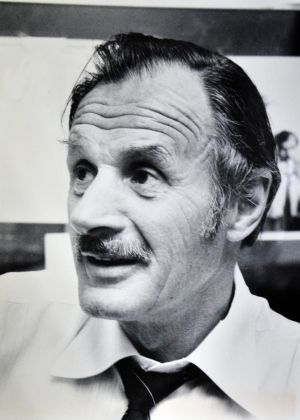 Frank Cranston (Canberra Times)
Frank Cranston (Canberra Times)
Cranston’s article in the Canberra Times quoted the ‘Those heroes …’ words, including ‘equal Johnnies and Mehmets’, but described them as coming from ‘an address given at Gallipoli in 1931’ by Kaya using Atatürk’s words. This may have been what Pelit told Cranston, though İğdemir says Kaya’s speech was in 1934 and corrects Campbell when Campbell says 1931.[10] Yet just ten days after Cranston’s article, Australian politician Don Dobie MP, speaking at an Atatürk centenary conference at the Australian National University, used the same words as Cranston but dated them to 1934, not 1931.[11] So, by 1981, the words that Atatürk allegedly wrote and Kaya allegedly said, but including the words that Campbell and İğdemir had agreed on just three years before, were being quoted here and there but there was still some slipperiness regarding the date the words were allegedly first used.
More research in Şimşir and other sources may well show that the version including equal Johnnies and Mehmets had become accepted because of İğdemir’s initial quick acceptance of Campbell’s words and the subsequent work of Pelit and Şahinbaş on their country’s behalf rather than because of any avid reception on the Australian side. (Honest History’s further research on 1984-85 suggests the words were not familiar to Australian officials then and that they took the words on trust from the Turks; more to come on that.)
Four months after Şahinbaş arrived in Australia in 1981 he spoke to the Canberra Times about the need to improve Turkish-Australian relations. While Turkey respected the Gallipoli connection, he said, ‘we need more between us than that … It is part of my mission in Australia to find areas where we can develop relations and get to know each other better’. Meanwhile, ‘[o]nly through the implementation of Ataturk’s ideals can Turkey preserve her place in the modern civilised world’.
 Bilâl N. Şimşir (Turkish Embassy, Canberra)
Bilâl N. Şimşir (Turkish Embassy, Canberra)
So, when the Turkish Embassy told the Turkish Foreign Ministry in 1985 that the embellished words were ‘well established’ the Embassy may simply have been reflecting the success of its own promotional work and its desire not to discard useful ballast in the developing Turkish-Australian relationship which Şimşir’s lengthy article documents. Şimşir makes much of the point that the visit by Turkish Foreign Minister Halefoğlu to unveil the Anzac Parade Atatürk memorial was the first visit by a Turkish Minister to Australia and his article contains lengthy quotes from the Minister’s speeches and Australian responses.[12]
2010: Deputy Aydoğan takes on the Ministry of the Environment and Forestry
We move on a quarter of a century. Cengiz Özakinci’s article on the events of 1984-85 includes a photograph of two pages of the Minutes of the Grand National Assembly of Turkey (the Turkish parliament) from 2010 where Ergün Aydoğan, Deputy for Balıkesir, put a question to the Minister responsible for the Gallipoli area. Aydoğan represented the opposition Kemalist Cumhuriyet Halk Partisi (Republican People’s Party), founded by Ataturk in 1919.
We have translated Aydoğan’s question and the reply from the Minister, Professor Dr Veysel Eroğlu.
The Kabatepe Beach Memorial [Aydoğan began], which is an inscription on a stone monolith at the south of the Çanakkale Anzac Cove Ariburnu Cemetery beside the Aegean Sea, consists of Mustafa Kemal ATATÜRK’S words delivered in 1934 to the first Australians, New Zealanders and British to visit the Gallipoli battlefields. The monument was unveiled by the Australian Senator Arthur Gietzelt on 25 April, 1985. The same monument was unveiled in Wellington, New Zealand on the same date. When the Turkish and English texts on the monuments are examined, it is seen that they have sentences that differ in meaning. The words that are read as “You are lying side by side and in the bosom of the Mehmets” in the Turkish text, are read as “There is no difference between the Johnnies and Mehmets to us where they lie side by side” in the English text.
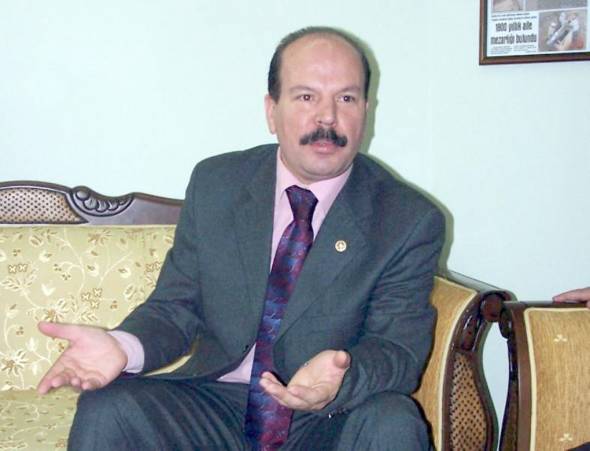 Deputy Ergün Aydoğan (Gonengundem)
Deputy Ergün Aydoğan (Gonengundem)
Leaving aside for the moment that Honest History’s research has found no evidence that Atatürk’s words were delivered in 1934 in the way Aydoğan describes, the Atatürk memorial in Wellington was not unveiled until 1990 and Aydoğan did not even mention the Anzac Parade memorial (which was unveiled on the same day as the one at Ariburnu). All this suggests that the story of the ‘Atatürk words’ was not widely known in Balıkesir in 2010. Mr Aydoğan, nevertheless, had firm views on the alleged equality of Johnnies and Mehmets and whether Atatürk’s memory should be lumbered with it.
In the light of this information [he asked the Minister]:
1. On what grounds have the words of Mustafa Kemal Atatürk been changed?
2. Has this translation been approved by the Historical Society?
3. Who has given themselves the authority to make this change when ATATÜRK says that “writing history is as important as making history”?
4. If ATATÜRK’S words are changed like this irresponsibly by everyone, how will future generations read the real sayings?
5. Is this change interpreted as a mistake by you?
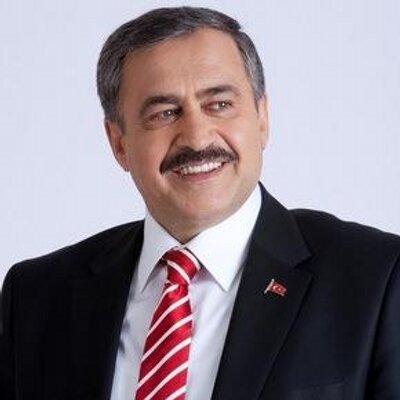 Minister Veysel Eroğlu (Twitter)
Minister Veysel Eroğlu (Twitter)
The Minister gave this answer to Deputy Aydoğan:
ANSWER 1, 2, 3, 4, 5. In accordance with the Gallipoli Peninsula Historical National Park Long Term Development Plan, our Ministry will start activities shortly to eliminate shortcomings through studies that will be carried out by a “Local Historical Society” consisting of lecturers from the departments of history of our universities for the National Park.
We do not know what happened after the Turkish Minister’s evasive answer. Presumably there was a backstory before his evasion, as well; perhaps the Environment Ministry checked with the Foreign Ministry about the implications for Turkish-Australian relations of changing the words. Six years on, the Ariburnu words remain as they were in 2010, as indeed they do in Anzac Parade and many other places.
Conclusion pro tem
Deputy Aydoğan was a little confused about the details but, just like the Turkish Foreign Ministry 25 years earlier, he focused on the gloss – the stretch – in the assertion that invading Johnnies and defending Mehmets were equal, lying dead in the soil of what was once the Ottoman Empire. We do not know if the ministry officials in 1984-85 were Kemalists or Atatürk purists; Deputy Aydoğan certainly was both of these.
In both cases, however, it can be argued that the purists came up against a sentimental and political stitch-up (Turkish komplo), agreed by Campbell and İğdemir, possibly blessed by Korutürk and subsequent Turkish leaders (President Evren was closely involved in the 1984-85 renaming-memorials deal), promoted by the Turkish Embassy in Canberra, supported by sympathetic journalists like Cranston, carried forward by the Turkish Historical Society, and, finally, endorsed – without much understanding – at Australian government level in the 1984-85 deal.[13]
 Faruk Şahinbaş (Turkish Embassy, Canberra)
Faruk Şahinbaş (Turkish Embassy, Canberra)
Campbell’s invented gloss became a central sentence of the oft-repeated ‘Atatürk words’, although Campbell’s role was ignored by Pelit and later Şahinbaş, was not picked up by Cranston and Dobie, seems not to have been known by Australian officials in 1984-85 (more to come on that), was glossed over by Şimşir, and was missed by Australian academic Adrian Jones in 2004 in a frequently-quoted article, even though Jones used İğdemir’s booklet.[14] (Admittedly, you have to read the booklet closely to find the details. İğdemir gives the English translation, including equal Johnnies and Mehmets, quite early in the text without making clear that this is the version proposed by Campbell and agreed by İğdemir. A reader of the English version who lacked sufficient Turkish to compare the two versions – or did not bother to do so – would not have noticed the gloss.)
The ‘Atatürk words’, including no difference between Johnnies and Mehmets, have been politically useful to both Australia and Turkey for more than 30 years. They have helped Australia achieve the sentimental objective of officially renaming Anzac Cove. They have pleased the many thousands of Turkish immigrants to Australia. They have helped Turkey present an image of itself as a magnanimous, Western-inclined middle power in a strategically important part of the globe. They have been ‘a useful vehicle to cement relations between Turkey and Australia and so [have] been endorsed and quoted by successive Australian prime ministers’ – if not as often by Turkish prime ministers and presidents, who tend to have more important targets in the European Union and NATO to impress.[15]
The words have always had a strategic context. ‘There can be no denying’, Don Dobie MP said 35 years ago, ‘that Turkey’s importance lies in its strategic position as a barrier to Soviet expansion into the Islamic world and as a bridge between Asia and Europe’.[16] In 2016, some of the emphases have changed but Turkey’s importance persists. Events like the war in Syria, the refugee crisis, the Kurdish insurgency and the recent attempted coup – and the possible reaction to it – bring Turkey into sharp focus. According to the Department of Foreign Affairs and Trade, ‘Turkey’s foreign relations have been structured around pro-Western alliances, its geo-strategic position and cultural and historical ties’. (Update 21 July 2016: There are some interesting parallels between Turkey 2016 and earlier years, especially in relation to Turkey’s links to ‘the West’.) Turning a blind eye to the dodgy history of Atatürk’s comforting words might be seen by many as a small price to pay to preserve these relations. Or it might just be that we don’t like shooting Santa Claus.
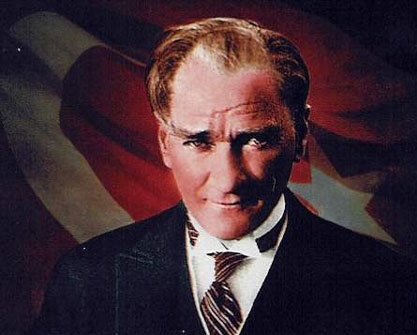 Atatürk (Bilgi Uzmani)
Atatürk (Bilgi Uzmani)
Notes
[1] Uluğ İğdemir, Atatürk ve Anzaklar (Atatürk and the Anzacs), Turk Tarih Kurumu Basimevi (Turkish Historical Society Publishing), Ankara, 1978, p. 44. The slightly clunky style in English may be because Campbell’s letter was translated into Turkish and then back into English.
[2] İğdemir, pp. 55-6.
[3] In fact, says Peter Stanley, ‘The only Turks in the [Anzac] cemeteries are those employed by the Commonwealth War Graves Commission, which has been solely responsible for the cemeteries’ upkeep since the war’s end’.
[4] The historian Erik Jan Zurcher refers to ‘the coup d’état of September 1980 and the subsequent state-led campaign to turn a modified Islam-friendly Kemalism into an ideology that could be an effective antidote against socialism and fundamentalism. It was the [military] junta of Kenan Evren that reinvigorated (and significantly altered) Kemalism as a state ideology and, ironically, it was also the policies of this junta that led to the emergence of a civil Kemalism in the early 90s.’ (EJ Zurcher, ‘The 50th anniversary of the republic and official Kemalism in the seventies’, n.d. (2014?) (viewed 18 July 2016).
[5] Bilâl N. Şimşir, ‘Kanberra’da Atatürk aniti tasarısı’ (‘The Atatürk memorial project in Canberra’), Atatürk Araştirma Merkezi Dergisi (The Journal of the Atatürk Research Center), XVII, 51, 2001, pp. 633-726.
[6] Şimşir, p. 677, note 41. Şimşir mangles the Turkish at this point, turning ‘Mehmetçiklerle’ (‘with our Mehmets’ or ‘with our soldiers’) into ‘Mehmetçilkelrel’, which is meaningless. He gets the word right elsewhere in the article.
[7] Şimşir, especially pp. 653-4.
[8] See the work of Ayhan Aktar and Jenny Macleod. ‘Aktar argues that the military reputation of Mustafa Kemal at Gallipoli was largely a creation of Empire historians (CEW Bean, WS Churchill and CF Aspinall-Oglander), was imported into Turkey after 1921 as Kemal rose to power, and was then embellished in the early 1930s as Britain tried to mend diplomatic fences with Turkey.’
[9] Şimşir, pp. 635-6. The National Library of Australia’s Trove facility for 1981 only covers the Canberra Times but this title shows no evidence of distribution of or ‘wide attention’ for the booklet.
[10] İğdemir, pp. 36, 55.
[11] ‘Opening address by the Hon JDM Dobie MP, Chairman, Sub-committee on Southern Africa and Middle East, Joint Parliamentary Committee on Foreign Affairs and Defence, ANU Public Affairs Conference, Ataturk and the Turkish Revolution, 10-11 August 1981’, p. 3, [Conference papers, ANU, 1981, ANU Library]. Dobie (p. 2) gives translations from Arabic for the Turkish names ‘Atatürk‘ and ‘Kemal’, suggesting there were gaps in his briefing.
[12] Şimşir, p. 678 ff.
[13] Honest History intends to publish an updated version of this earlier article, taking account of recollections of those involved as well as more from Şimşir.
[14] Adrian Jones, ‘A note on Atatürk’s words about Gallipoli’, History Australia, 2, 1, 2004, pp. 10-1 – 10-9. Jones (note 1) refers to the English version including Johnnies and Mehmets as an ‘anonymous English translation’ and also to ‘the fine translator’ (p. 10-4). He mentions Campbell in passing (note 4) but leaves out the Campbell-İğdemir process which produced this version.
[15] There are some Australian examples here under the heading ‘Prime Ministers and other’.
[16] Dobie, p. 8.



Leave a Reply
You must be logged in to post a comment.